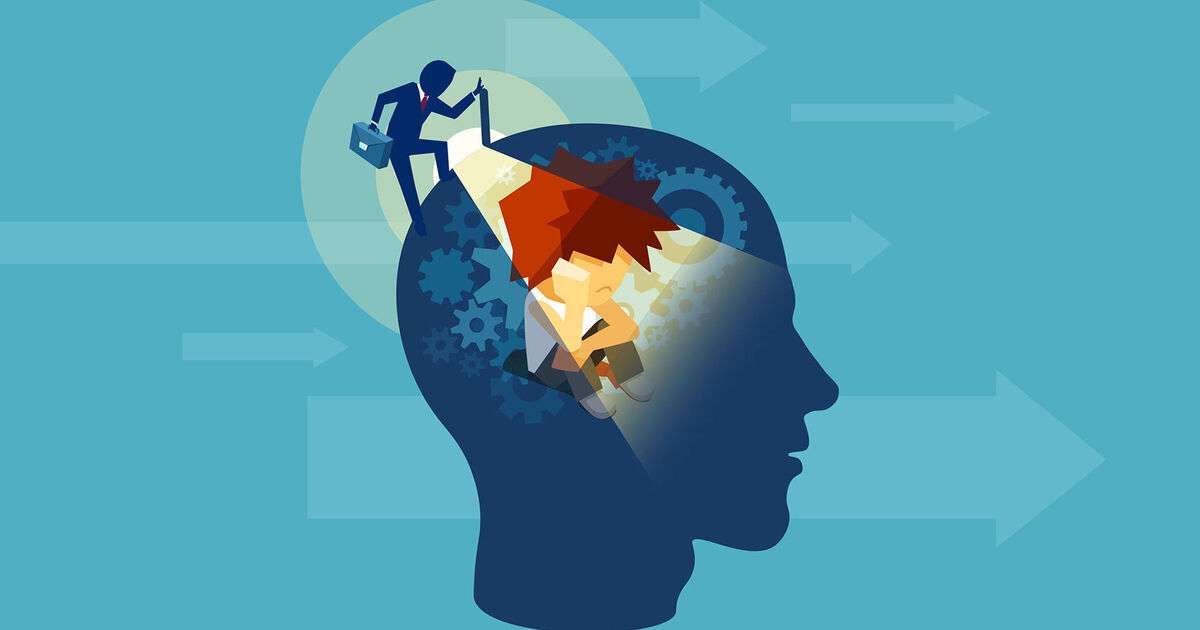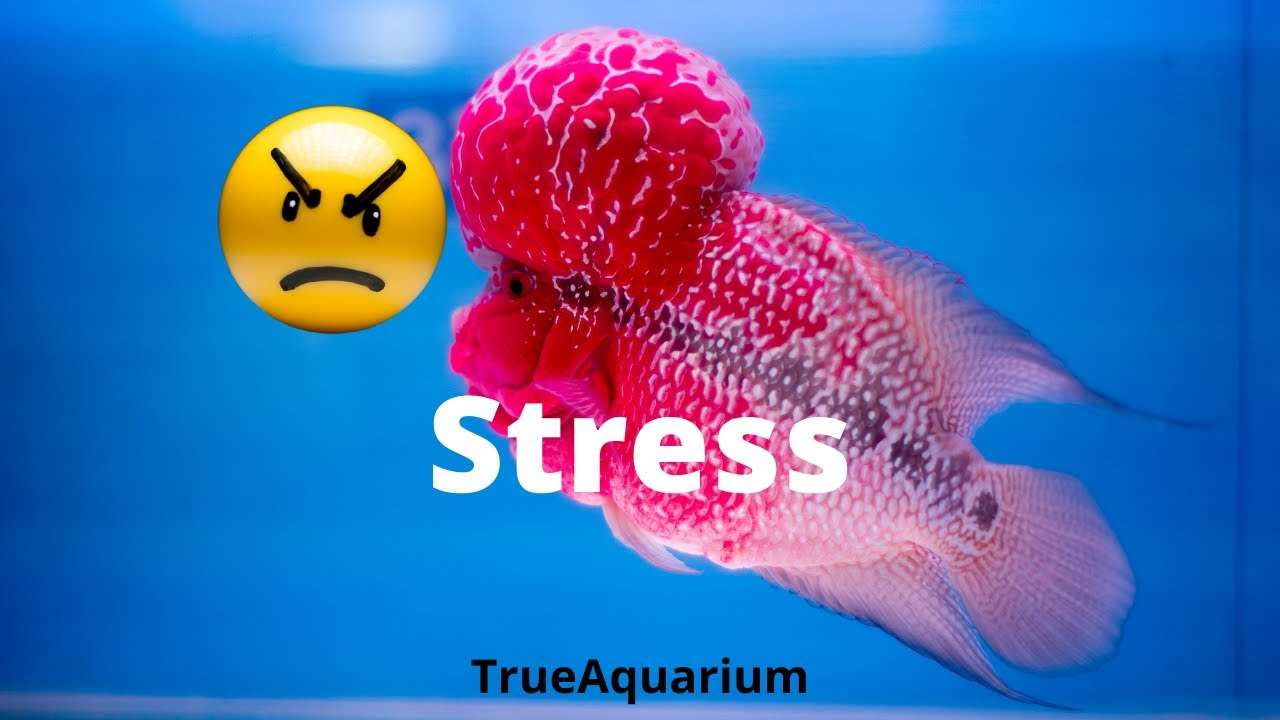Ever wonder how you’ve become the person you are today? The truth lies in the concept of psychodynamic theory. Your past experiences, relationships, and influences have all contributed to your personality in some way or the other. In this post, we will discuss a number of psychodynamic theory examples to help you develop a better understanding of personality development from a psychological perspective.
What is the Psychodynamic Theory of Personality?
The psychodynamic theory is a collection of different psychological theories that together contribute to the psychodynamic perspective. These theories mainly emphasize on how one’s individual personality is an amalgamation of early childhood experiences and unconscious desires and impulses. Famous theorists such as Erik Erikson, Sigmund Freud and Alfred Alder have contributed to the psychodynamic theory.
Sigmund Freud’s Psychodynamic Theory
Sigmund Freud is among the most influential names in psychology. The Austrian neurologist is considered as the pioneers in the field of psychodynamics because of his extensive research.
Freud has also widely known for the wealth of work he has produced over the years. In his study, Freud categorized personality into three parts namely id, ego and superego.
According to Freud, a person is born with id – which drives us to fulfill our basic needs. The id can be inconsiderate, forcing one to run after their desires since it is fuelled by aggression.
However, as kids grow older, he or she develops the ego. Unlike id, ego is transfixed on the principle of reality and mediates between id and superego. The superego serves as a moral conscience which helps us differentiate between right and wrong.
Alfred Adler’s Inferiority and Birth Order
According to Alfred Adler’s theory, each one of us is born with a sense of inferiority. This is evidenced by how weak and fragile a newborn baby is. Adler believed that inferiority is an integral part of our personality. In fact, the very feeling of inferiority is what pushes us to become superior.
Alder also explained birth order and how older children may develop inferiority complex once they have a younger sibling. In this scenario, the middle child may feel more superior to their older sibling and consider themselves as healthy competition.
On the other hand, the youngest sibling is likely to feel the most helpless of the lot. Because of this, the younger child may develop a sense of inferiority that is quite similar to the sentiments of a newborn.
Erik Erikson’s Theory of Psychosocial Development
Erik Erikson is widely known for his theory of Psychosocial Development. In it, Erikson discussed eight stages of personality development starting from infant-hood to adulthood.
In each stage, the person experiences a certain challenge that helps mold him into the person he/she ought to become, thus contributing to personality development.
Psychodynamic Theory Examples
To help you gain a better idea, we’ve compiled a list of psychodynamic theory examples. The key concept to keep in mind here is that early childhood memories greatly contribute to the person we are today. Some examples include:
- Early childhood events may cause some people to develop a nail-biting habit
- A childhood incident that caused fear in the past may trigger anxiety in adulthood
- Behaviors such as obsessive handwashing are often linked to may be linked to childhood trauma in the past
- Skin picking and hair plucking are compulsions which may be linked to developmental trauma
- Feeling pangs of nervousness after completing certain tasks may be associated or linked to a childhood memory.
- A childhood experience that caused fear of an open space may lead to the development of agoraphobia in adults
- Number aversion is another obsessive behavior that is commonly associated with childhood development
Hopefully, you’ve enjoyed reading about psychodynamic theory examples. For more information, check out our psychology section. Happy learning!
Psychodynamic Approach to Personality
According to the psychodynamic approach, childhood experiences are crucial elements within personality formation and will continue to affect behavior and emotions into adulthood. Per this perspective, personalities are created by conflicts between biological drives for instant gratification and the more socially acceptable desire to control uninhibited urges. Freud stated that personality is developed amidst the struggle to establish stability between these two forces, which are known as the id and the superego.
The id is the most primal part of the personality, demanding that impulses be instantly fulfilled even though the results might be socially inappropriate or even illegal. The superego acts as the moral high ground, attempting to subdue the wild impulses of the id. Functioning as the middle ground, the ego is a third component of the mind that attempts to resolve the constant battle between the id and the superego. The ego aims to establish compromise in order to rationally and appropriately satisfy the id’s impulses, thus allowing urges to be fulfilled without producing guilt or problems. As a group, the id, superego, and ego constitute the psyche, or elements of the mind. Should the psyche function in harmony and maintain a stable dynamic, an individual will maintain a healthy and well-balanced personality. However, if one element is overly dominant or passive, a personality disorder may develop.
Stages of Psychosexual Development
Per the psychodynamic approach, individuals proceed through five stages of psychosexual development during youth and adolescence. Each stage corresponds to a specific bodily area referred to as an erogenous zone, which represents where gratification is focused. These stages are related to personality development; as Freud stated, childhood experiences influence personality and behavior into the adult years. Should a child receive inadequate nurturing or neglectful parenting during one of the psychosexual stages, they may develop a stage-related fixation that continues to manifest into adulthood. The five stages of psychosexual development are as follows:
- Oral stage, from birth to 18 months: Needs are mainly met via oral gratification.
During the oral stage, infants meet their needs via oral gratification, including sucking on a bottle.

- Anal stage, from 18 months to three years: Toddlers are taught about the concept of self-control, with potty training being a prime example.
- Phallic stage, from three to six years: Small children maintain an underlying sexual desire for their opposite sex parent but resolve this by striving to imitate their same sex parent, thus comprehending their social role.
- Latency stage, from six years to puberty: Biological drives are briefly eased as a child focuses on relationships outside of the home.
- Genital stage, 12+ years: Into the teen years and adulthood, individuals become interested in sex, but must utilize rationale in order to control impulses.
Defense Mechanisms
Freud’s perspective includes defense mechanisms, which are unconscious actions that seek to safeguard the conscious mind from unpleasant thoughts and memories. This process is meant to lessen the anxiety that accompanies the psychologically hurtful truths that individuals would rather not recall. Common forms of defense mechanisms include:
- Denial: Disregarding the reality of a situation due to its unpleasant nature.
- Repression: The mental suppression of undesirable ideas.
- Displacement: Shifting actions toward a target that should not be the recipient.
- Projection: Inappropriately assigning impulses to others as opposed to oneself.
- Regression: Reverting to more primitive coping strategies.
Psychodynamic Approach in Modern Psychology
Although the psychodynamic approach is sometimes viewed as outdated, it has evolved within the past century and continues to be practiced within modern psychology. In particular, brief forms of psychodynamic therapy have been adopted by contemporary therapists. Traditionally, this approach has allowed individuals to freely communicate various recollected thoughts and feelings over the course of a few years, as demonstrated in the case of Breuer’s patient Anna. In contrast, the brief modern approach encourages one main therapeutic focus during twenty-five sessions or less, as opposed to discussing assorted thoughts.
As a psychological approach, the psychodynamic perspective holds pros and cons. One major benefit is the concept of insight, being that this process facilitates the recognition of repressed emotions or motivations. Gaining insight allows individuals to connect past events with current situations, and also consider new options and perspectives relating to their issues. Despite its advantages and influence, the psychodynamic approach has faced criticism. Critics have claimed that this perspective excludes the notion of free will, as the psychodynamic approach relies on the idea that human emotions and behaviors are predetermined per uncontrolled experiences. Also, this approach has been criticized due to the difficulty in empirically evaluating its key principles, such as neglectful parenting in infancy leading to adulthood personality disorders. Finally, this approach has been viewed as controversial due to the idea that the sexual drive, even in childhood, is a motivating force in personality growth.
Psychodynamic Approach Examples
In order to illustrate the psychodynamic approach, a few examples may be considered. Fictional client Mary is seeking therapy due to crippling anxiety that adversely affects her daily life. A modern therapist who specializes in the psychodynamic approach would help Mary to explore childhood memories and events that may have triggered her anxiety. During the therapy sessions, Mary recalls an unpleasant incident from kindergarten that she repressed: she got lost during a school field trip and was left behind by the bus, causing her to experience terrible fear and anxiety for hours until she was found. Now that the origin of Mary’s anxiety has been established, she can understand her behavior and work with her therapist to develop appropriate coping mechanisms.
Another example involving the elements of the personality may be illustrated by the case of fictional client John, who is seeking therapy due to a personality disorder. John lacks basic social appropriateness, as he allows his every impulse to direct his behavior, which results in arrests and poor personal relationships. A therapist who specializes in the psychodynamic approach to personality would conclude that John has a dominant id and a weak ego, which causes John to give in to his every urge. This therapist may work with John to develop strategies that help strengthen the ego and weaken the id, allowing for a more balanced personality.
Lesson Summary
The psychodynamic approach to psychology points to underlying, unconscious forces of the mind as motivation for human behavior and feelings. Sigmund Freud was the pioneer of this perspective and established the discipline of psychoanalysis, which is a psychological therapy that involves the free-flowing communication of emotional experiences, particularly those from childhood. Freud determined that the human personality is composed of three mental elements, which are the urge-filled id, the middle of the road ego, and the moral superego. These elements of the mind, as well as thoughts, feelings, and how humans define themselves, form the psyche.
According to the psychodynamic approach, all individuals pass through the five stages of psychosexual development. These steps begin in infancy with the oral stage, and then proceed forward with the anal, phallic, latency, and genital stages. These stages of development may lead to new conflicts and unresolved issues that manifest as dysfunctional behavior, should inadequate nurturing occur during a particular phase. Defense mechanisms may arise as a result of the desire to protect the conscious mind from unpleasant thoughts and memories. For example, an individual could apply projection, which shifts their feelings onto another person in order to feel better about their internal situation. Although Freud’s theories and work are sometimes viewed as controversial, his ideas greatly influenced the field of psychology.
Introduction
What is the psychoanalytical/psychodynamic perspective? This perspective relates to an understanding of the past and the way it impacts an individual. The AP® Psychology test is going to have a section on this perspective and you will need to understand the basics.
Defining the Psychoanalytical/Psychodynamic Perspective
The psychoanalytical/psychodynamic perspective relates to not just the behavior that an individual engages in, but why they engage in it. According to this perspective, there is a reason for everything an individual does and it is related directly to something that has occurred in that individual’s past. By understanding the incident that occurred in the past, it is possible to learn a way to overcome it in the present. This is the basis of understanding the psychoanalytical/psychodynamic perspective.
That doesn’t seem so difficult right? Well it’s not. This is actually a rather simple perspective to understand. The basics are something in the past causes something in the present. If you understand that, then you are already a good way towards understanding this theory and getting a good score on this part of your AP® Psychology test. Of course, there is a bit more to it than just that (at least there’s more you’ll need to be able to do in order to get that high score you’re looking for). You need to understand how to apply this theory and you’ll need to know more about where it came from.
Founders of The Psychoanalytical/Psychodynamic Perspective

Sigmund Freud founded the idea of psychoanalysis, which has evolved into the psychoanalytical/psychodynamic perspective. He believed that unconscious thoughts or motivations of an individual would directly correlate with the way they behaved in their conscious actions. Therefore, if an individual underwent trauma in their childhood, it would affect the way that they behaved throughout their adult life. The memory from childhood could potentially be positive or negative and still affect the individual in a negative way.
By delving into the unconscious mind, Freud believed one could unlock those unconscious memories and motivations. By doing so, it would be possible for the individual to overcome problems that were expressed through depression or anxiety disorders. Freud believed that it was necessary to unleash all of those repressed thoughts and feelings in order to become a healthy, fully functioning adult.
Examples of The Psychoanalytical/Psychodynamic Perspective
The psychoanalytical/psychodynamic perspective may seem simple in theory but here are a few examples of it in practice to help you understand what it really means:
Example 1:
Jennifer was physically abused as a child. Her father would get very mad at her whenever she would not do something he had asked of her. Sometimes he struck her with his hand and sometimes with a belt. Jennifer would get very upset when this happened and withdraw into herself. She would strive to do everything she could to make him happy the next time he asked her to do something.
Now, Jennifer is an adult. She is married and has a house of her own. One day, her husband asked her to pick up a cake at the store for him to take in to work. Jennifer was busy at work and forgot to stop on her way home. When her husband gets home, he asks where the cake is and Jennifer realizes she forgot to get it.
Based on the psychoanalytical/psychodynamic perspective, Jennifer would react to her forgetfulness in the same way that she used to react when her father would ask her to do something and she forgot to do it. She would likely retreat into herself and work hard to become“better”.
For her husband, this would likely be a confusing reaction. Even if he were angry that she forgot, he would not expect her to react in this way. Jennifer, being withdrawn, would not explain to him why she didn’t get the cake or why she is suddenly withdrawn.
Over time, this can cause a rift between the two of them. Without facing up to the thoughts and experiences she had as a child, Jennifer would not be able to have a healthy relationship with her husband.
Example 2:
When Mark was young, his mother left the family. She never told him she was going to leave.But one day, when he got home from school, she wasn’t there. His father would tell him that she was a selfish person and that she abandoned them. He told Mark that all women would leave eventually and that you should never get attached to one because they would not stay.
Now, Mark is a carefree bachelor. He is going on 30 and even though his friends are all settling down, Mark can’t find a woman he wants to spend his life with. He thinks he wants to start a family but always finds himself pushing women away when he starts to feel close to them.
Because Mark was told as a child that all women will leave, he is afraid to fall in love. He doesn’t want to get too attached to a woman because, based on his past, he believes that any woman that he would love will eventually leave him.
In order to overcome this feeling, Mark must revisit his past and consider the events that occurred when he was younger. He will have to think about his mother leaving and will need to consider what it means for his future. Until he learns that not all women are going to leave, or becomes willing to take the risk, he will not be able to settle down and have a family.
Example 3:
Megan and Kelsey are sisters who have grown up in the same household. When they were young, Kelsey fell out of a tree and broke her leg. It never healed properly and she has walked with a limp ever since. Megan was with her when the incident happened and watched her fall though she was able to climb out of the tree safely herself.
Now, the two are adults. Kelsey is not affected by her fall (other than the limp) but Megan is afraid of heights. She finds herself terrified of tall buildings, bridges and has never climbed trees again. She worries every time her children climb on the playground or if they attempt to climb the tree in their backyard.
Because Megan witnessed the fall that changed Kelsey’s life, she is incapable of removing the fear that it will happen in her own life. She understands that the injury occurred because of the height of the fall and this has impacted her greatly.
Until Megan is able to understand that the fall is no one’s fault and that Kelsey is okay, she will not be able to overcome her own fear of heights. The psychoanalytic/psychodynamic perspective would tell us that the incident that she witnessed in her past led to her current fear.
Finding More Information on Psychoanalytic/Psychodynamic Theory
If you’re looking for even more information on this theory, you may want to check out Barrons AP® Psychology 6th Edition. This is the most recent edition of the book which is inexpensive and also has an option for supplementary flashcards. This is considered one of the best prep books available and the cards have the distinct advantage of being easy to carry around.
This book contains a lot of information about the many theories in psychology which includes psychoanalytic/psychodynamic theory as well as a variety of other theories. You’ll also find definitions of commonly used terms, practice tests and free response questions that you can practice with. A large number of AP® Psychology students have used this tool and recommend it for others looking to get a 5 on their test. If you prefer online resources, you may want to consider Albert.io’s Guide to AP® Psychology.
Conclusion
Psychoanalytic/psychodynamic perspective is based on a belief that the past will dictate the future. In order to fully understand this theory, it’s important to understand that the way a person acts is a direct reflection of an experience they had when they were younger. It doesn’t have to be a childhood experience. It could be an experience from earlier in adulthood. It may even be an experience that was witnessed and not experienced personally.
One thing is certain when you’re studying for your AP® Psychology test: this theory will definitely be on it. As you begin your AP® Psychology review, remember these key points:
Behavior is directly related to the past
1. Unconscious must be made conscious to resolve the problem
2. Sigmund Freud is the founder of psychoanalysis
Obviously, the more information that you are able to remember, the better you will be able to do. Remembering the basics will enable you to get a decent score and likely allow you to get at least a passing score of 3. If you’re looking to get a 5, you’ll want to remember as many nuances as possible. This exam includes an essay portion and the more in depth information you are able to provide on your essay, the better the score you will receive.
By the way, you should check out Albert.io for your AP® Psychology review. We have hundreds of AP® Psychology practice questions written just for you!



